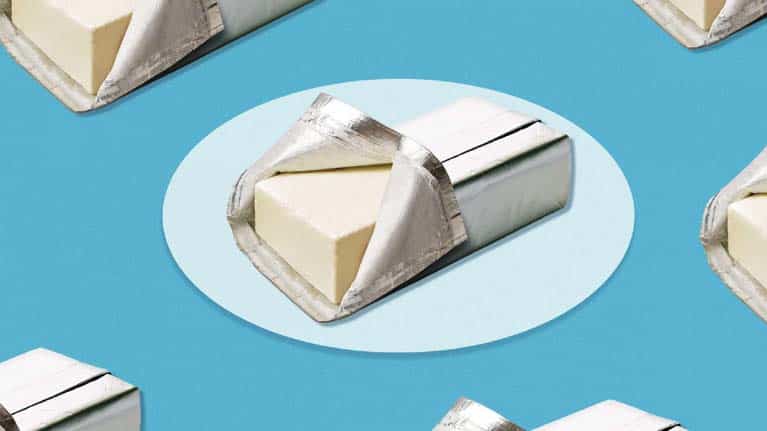Fat-free cream cheese, also called American Neufchatel cheese, has about one-third as much fat as regular cream cheese. By using dairy with less fat instead of dairy with more fat, cheesemakers can make less fattening cream cheese. Aside from that, the regular and low-fat versions are usually made the same way.
Other than that, the regular and low-fat versions are usually made the same way. Even though low-fat cream cheese can usually be used in place of regular cream cheese, the lower amount of fat in low-fat cream cheese can affect some recipes.
Fat-free cream cheese has these things in it:
Fat-free cheese is sometimes a good choice, but it doesn’t work in every recipe. It is made with skim milk and doesn’t have as much creaminess as regular or low-fat versions. In addition, it feels hard and shiny. It doesn’t spread well on a bagel, and you can easily tell the difference.
Neufchatel cheese is almost the same as cream cheese, but it has less than half the fat. When mixed with other ingredients, dips, dressings, desserts, and other recipes that call for cream cheese work best when they are chilled. It works well in baked foods as well. One ounce of cream cheese without fat has:
- 15 calories,
- 0g fat,
- 0g sat fat,
- 0g mono fat,
- 2.5g protein,
- 1g carbs,
- 100mg salt, and
- 3mg of cholesterol.
Difference between cream cheese with fat and cream cheese without fat
Low-fat cream cheese has about 40% less calories and about half as much fat as regular cream cheese. If you choose this healthier option, you can enjoy cream cheese without eating too much fat and calories.
If you use low-fat cream cheese instead of regular cream cheese when spreading cream cheese on a bagel, mixing cream cheese into your favourite sauce, or putting cream cheese on a salmon sandwich, you probably won’t notice a difference in taste.
1. Calories
One ounce of regular cream cheese has 100 calories, which is a lot. In the same amount of low fat cream cheese, there are less than 60 calories. The fat in traditional cream cheese makes up more than 90% of its calories. This is a higher percentage than the version with less fat. The fat in low-fat cream cheese makes up less than 70% of its calories.
2. Fat content
Regular cream cheese has about 10 grammes of fat in a 1-ounce serving, making it a high-fat food. The same amount of fat-free cream cheese has less than 4.5 grammes of fat. Most of the fat in cream cheese is saturated fat. This bad fat is bad for your heart because it makes low-density lipoprotein, a type of cholesterol that clogs arteries, rise.
The Dietary Guidelines for Americans 2010 say that you shouldn’t eat more than 10% of your total calories from saturated fat. There are nine calories in every gramme of fat. If you eat 2,000 calories a day, you can have up to 22 grammes of saturated fat. Regular cream cheese has 5.5 grammes of fat, but low-fat cream cheese only has 2.5.
3. Proteins
The amount of protein in regular cream cheese is less than that in low-fat cream cheese. Per ounce of traditional cream cheese, there are 1.5 grammes of protein. There is one more gramme of protein in each 1-ounce serving of low-fat cream cheese, for a total of 2.5 grammes. You need a certain amount of protein in your diet every day to build muscle, repair tissues, and use as an energy source when carbs and fat are not available.
Protein should make up between 10 and 35% of the calories you eat. Because each gramme of protein has four calories, a diet of 1,800 calories needs 45 to 157 grammes of protein.
4. Calcium
Cream cheese with more fat has less calcium than cream cheese with less fat. Traditional cream cheese has less than 30 milligrammes of calcium per ounce. In the same amount of low-fat cream cheese, there are about 45 milligrammes. For strong bones, you need to eat 1,000 mg of calcium every day. Traditional cream cheese can be replaced with 1 ounce of low-fat cream cheese, which gives you about 5% of your daily needs.
Is cream cheese without fat good for you?
If you want to know if low-fat cream cheese is better than regular cream cheese, here are the facts. In a 2017 report, the American Heart Association said that cutting back on total fat is not a good way to lower the risk of CVD. In other words, it may be better to replace calories from saturated fat with calories from plant-based foods like avocado or almonds than to just use cream cheese with less fat.
If you like cream cheese, one way to get it is to mix a lower-fat kind with foods that are high in plant fats. For example, you could use reduced-fat cream cheese in a dip with chopped walnuts or guacamole and other ingredients.
How to add fat-free cream cheese to your diet.
Mixing cream cheese with whole, nutrient-rich foods like vegetables, fruits, whole grains, nuts, seeds, and legumes is the healthiest way to eat it. At breakfast, you can spread it on whole grain bread and top it with vegetables like sliced tomato, cucumber, red onion, spinach, and bagel spice.
As a fruit dip, add a little maple syrup, cinnamon, and freshly grated ginger to plain cream cheese. Stir in flavorful things like garlic and herbs, then serve with crunchy fresh vegetables like carrots, cucumber, and red bell pepper slices. Before forming the mixture into balls and rolling them in chopped nuts or seeds, like sesame or chia, to serve with whole grain crackers, seasonings and nutritional yeast should be added.
Some kinds of cream cheese
a dairy-free cream cheese |
Another easy way to swap saturated fat for unsaturated fat is to choose cream cheese made from nuts, like Kite Hill Plain Almond Milk Cream Cheese Style Spread. A 2-tablespoon serving has 70 calories, 2 grammes of protein, 6 grammes of fat, 2 grammes of carbs, and 1 gramme of fibre. It is mostly made of almonds. |
Cheese with a lot of fat |
Cream cheese is a full-fat dairy product because none of the fat has been taken out. There are risks to your heart when you eat dairy fat, especially when you eat full-fat dairy. Researchers did find that replacing dairy fat with polyunsaturated fat or superior carbs from whole grains did lower the risk of CVD by 24% and 28%, respectively. This means that full-fat cream cheese may not necessarily increase the risk of heart disease, but it’s still not the best choice because other foods may protect heart health better. |
Cream cheese with no fat |
There are many kinds of cream cheese with less fat. About 72 calories are in it. Neufchatel sold in stores is mostly made of pasteurised milk, cream, salt, and other gums and cheese cultures. |
Conclusion
A better choice is fat-free cream cheese. Some people like regular cream cheese made from dairy, even though it’s not the healthiest choice. If that sounds like you, add avocado, olives, almonds, and other whole plant fats like those found in cream cheese to your diet. To find balance, eat it with natural, unprocessed foods that are high in nutrients.



